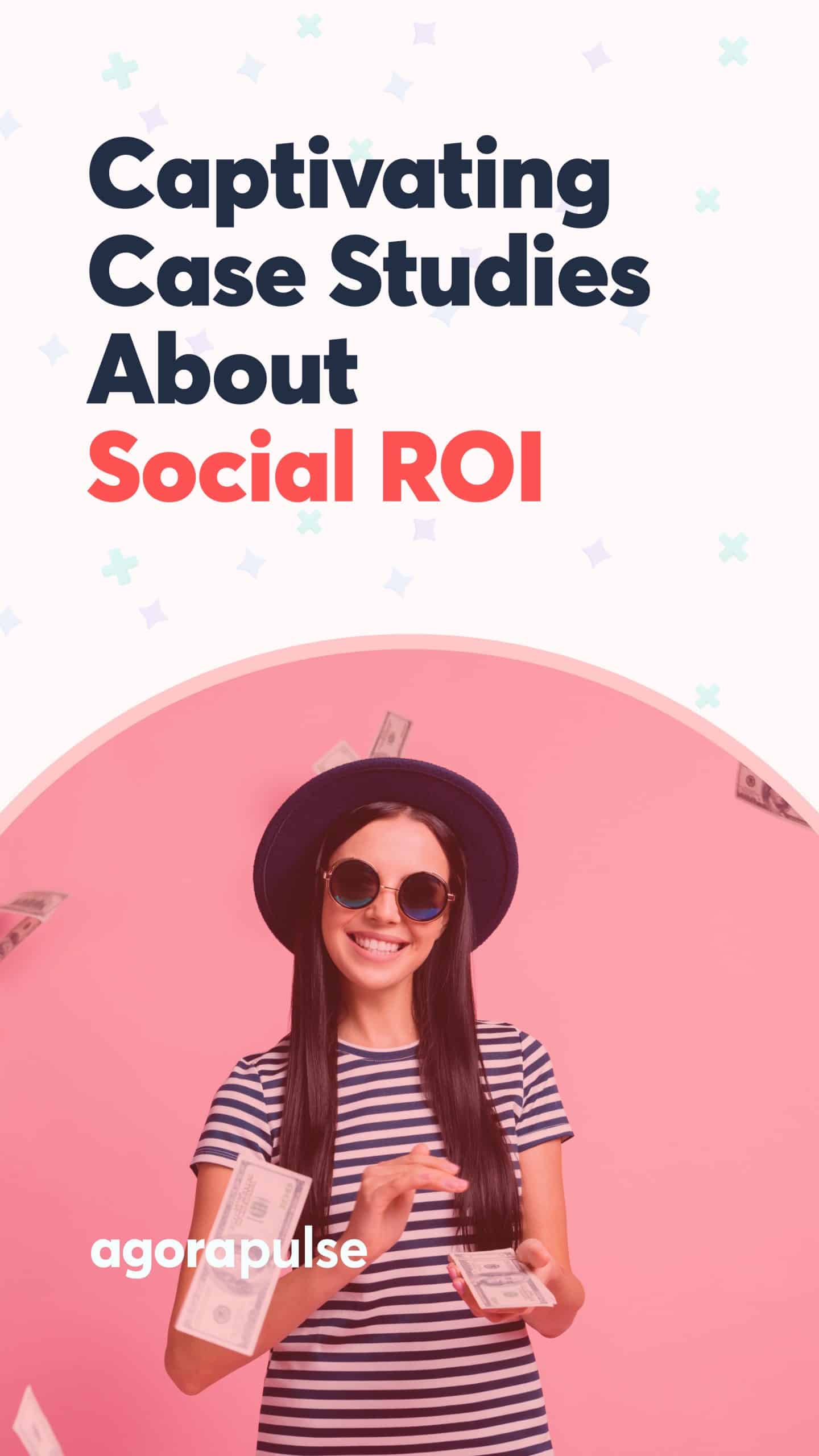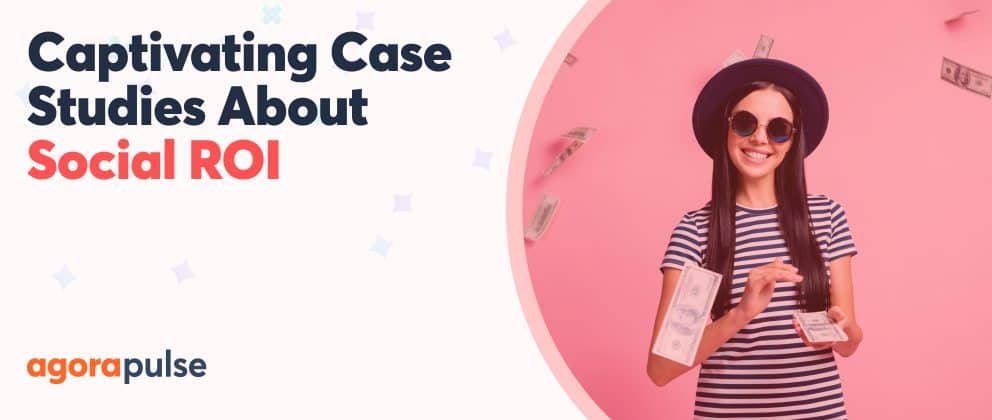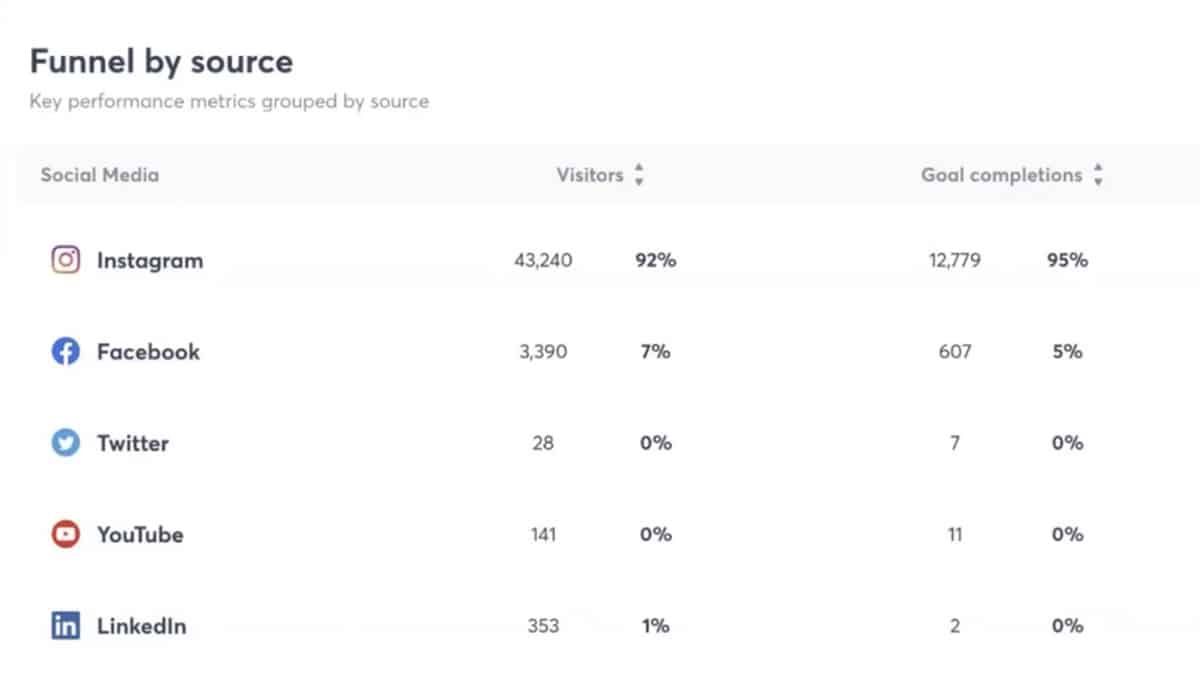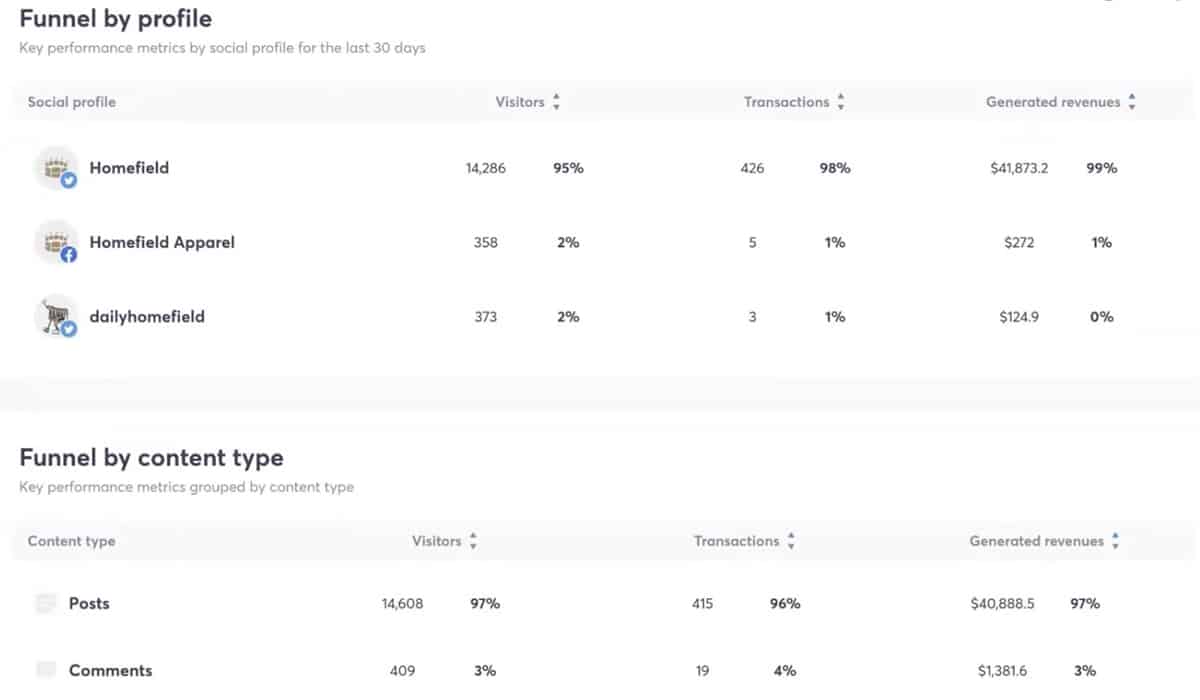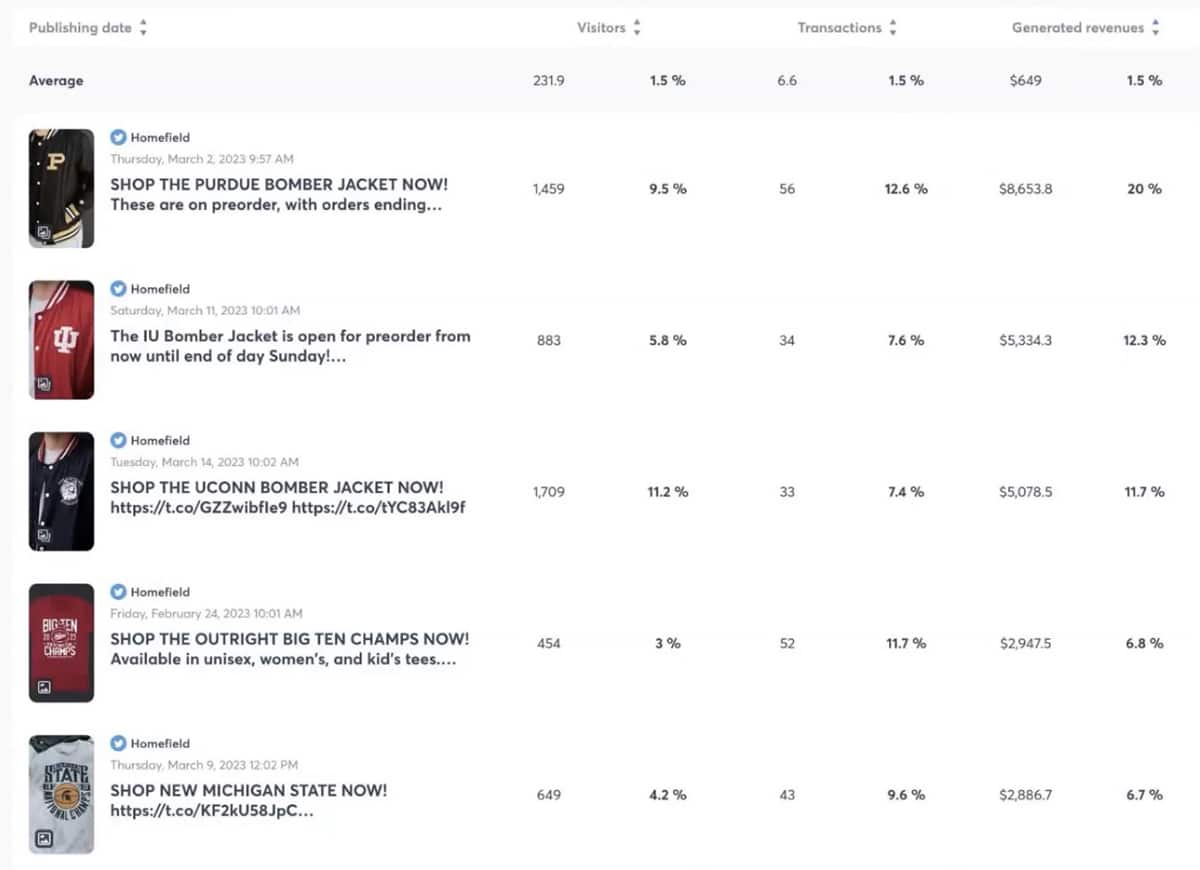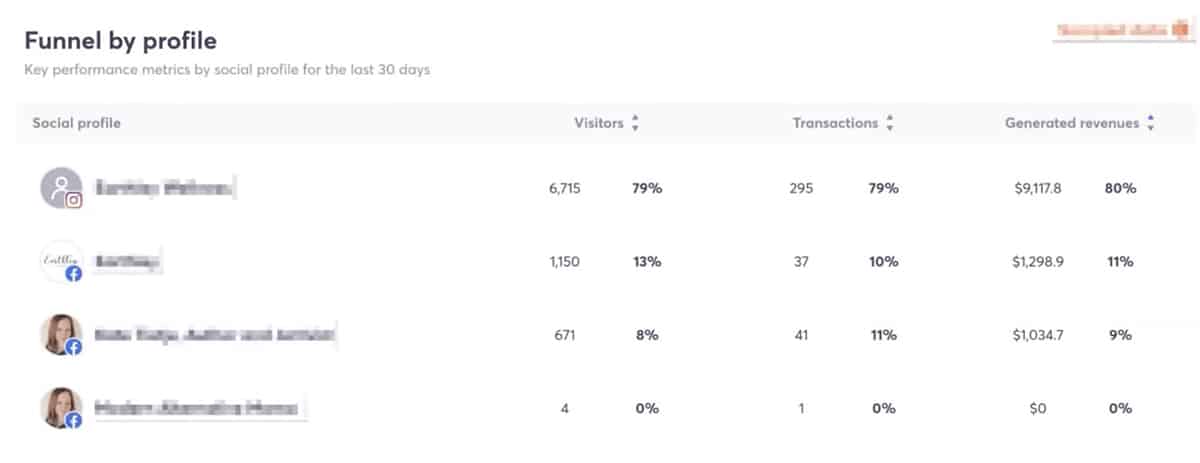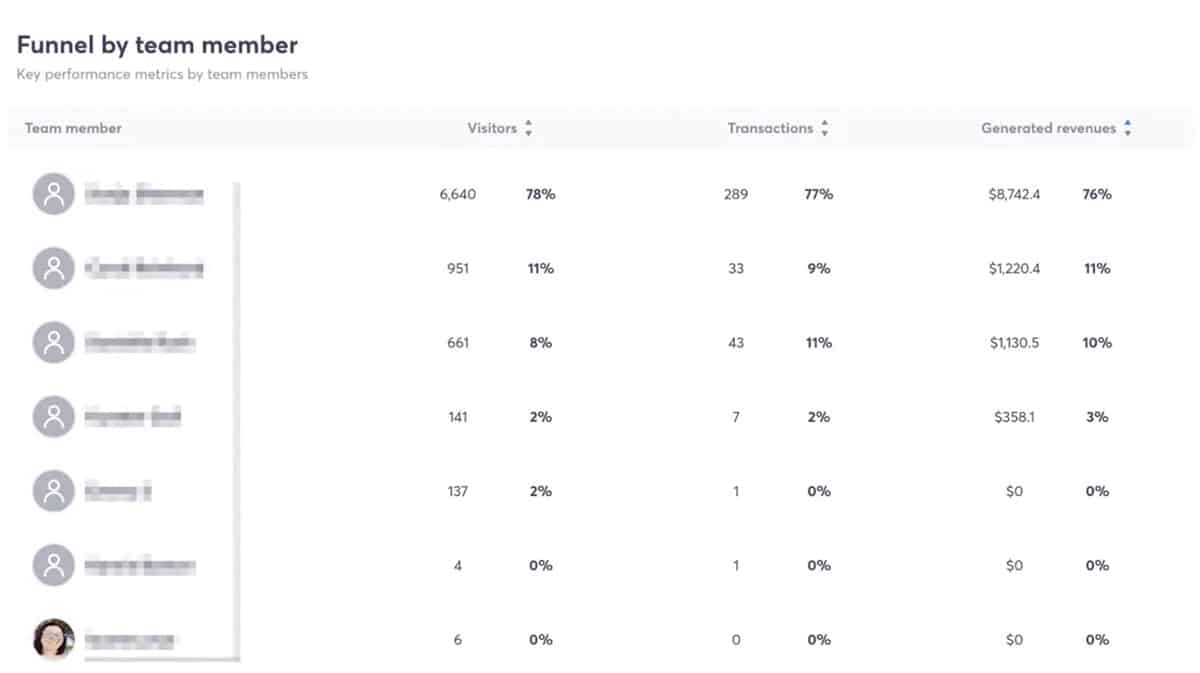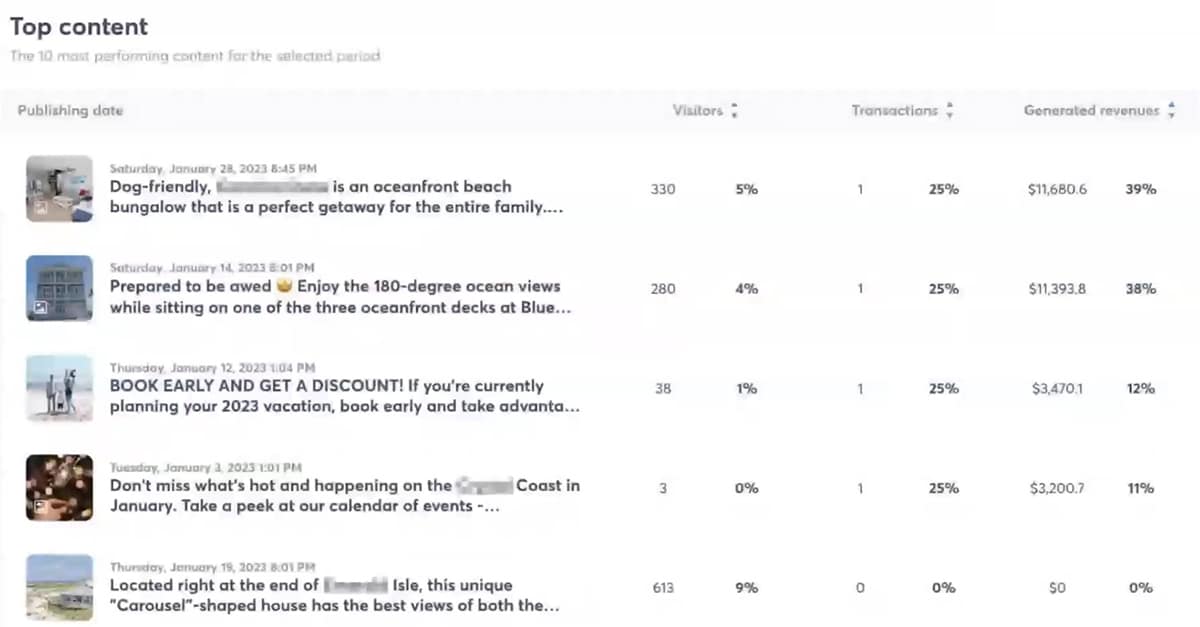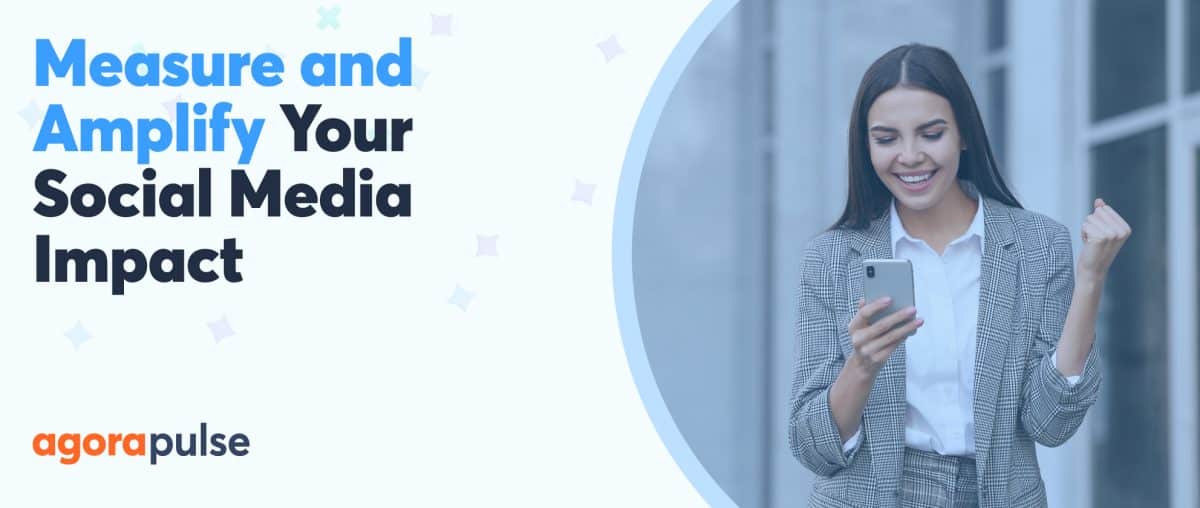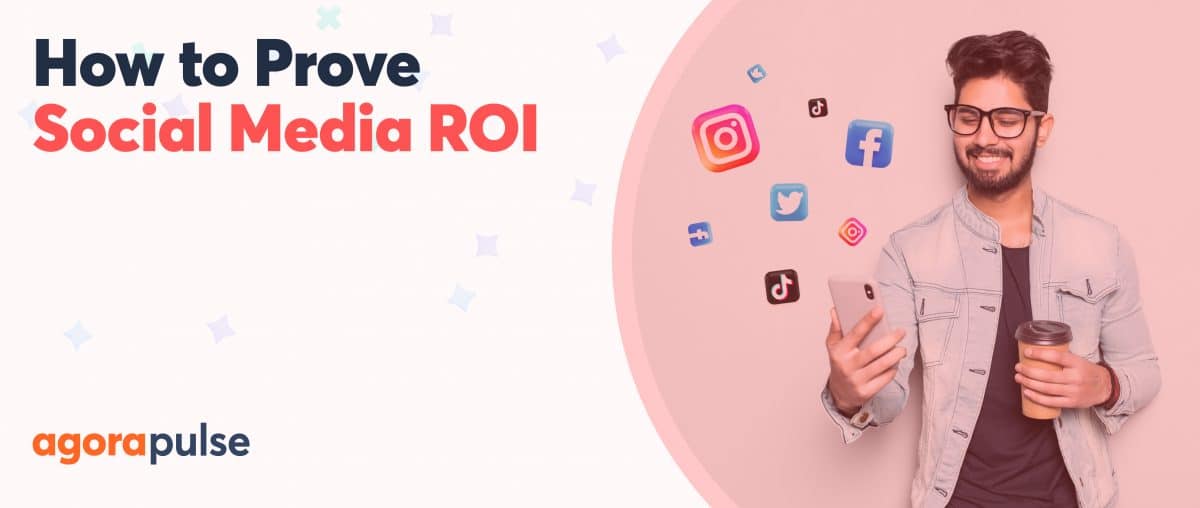If your marketing team is feeling pressure to do more with less, measuring the value of your efforts is more important than ever. It’s easy to assume that tracking the return on investment (ROI) of organic social media is impossible. But that’s far from true.
In this article, we’ll cover social media case studies that show how marketers are using organic campaigns to drive traffic, generate leads, and make sales. We’ll also explain how you can measure your own results using Agorapulse’s social ROI tool.
Why Organic Social Media ROI Matters
As a marketing leader, you have to master the art of proving your team’s value. After all, you’re responsible for defending your budget to stakeholders and securing the resources you need for marketing campaigns.
If you run paid social campaigns, you’re undoubtedly reporting on ROI. No matter where you advertise, it’s easy to track key performance indicators (KPIs) like engagement, website traffic, and conversions.
But if you’re like many marketers, you aren’t even attempting to track social media ROI from organic social campaigns. Why?
- Maybe you’ve dismissed organic social as too top-of-funnel (TOFU) to worry about. You might think organic social is more about awareness and engagement. As a result, you might not think there’s much value to measure.
- Perhaps your team focuses on organic channels that make tracking ROI particularly tough. For example, you might have an Instagram-first social strategy that doesn’t offer many linking opportunities.
- Or maybe your business doesn’t sell products or services online. As a result, you might not see the value in tracking clicks or conversions from your organic posts.
Sign up for FREE trial of Agorapulse.
How marketers can benefit from tracking organic social ROI
For many businesses, organic social is a top traffic and revenue driver. Companies across industries use social media to share everything from special offers to blog posts to breaking news.
So if you aren’t measuring the results, you’re missing out on major opportunities. Whether you’re getting pushback from stakeholders about organic social or you need to make the case for a bigger budget, tracking ROI can help you:
- Benchmark campaign performance
- Measure revenue from organic social media
- Identify your most lucrative channels and content
- Find the best tactics your team is using to generate revenue
- Make a data-driven case for your team to get more resources
Why measuring social ROI might scare marketers
If you haven’t been reporting on organic social ROI, you might be hesitant to start. You might worry that you’ll be held accountable for achieving ROI benchmarks. Measuring ROI is inevitable for most businesses. Stakeholders might not be checking revenue from organic social now. But at some point, they will.
If you start tracking revenue now, you can show the value of your work when it matters most. For example, you can show your ROI when economic conditions change or when competition gets tougher.
Hiding from the ROI discussion isn’t going to get you anywhere. Don’t let a fear of ROI stop you from seeing how you can improve your work and drive even more value. Be prepared by starting now.” (Emeric Ernoult, CEO of Agorapulse)
For agencies, acquiring and retaining clients can be incredibly competitive. If you track and report on ROI, you can easily differentiate your business.
With ROI data, you can also prove the value of your agency beyond likes and followers. A great ROI report can retain clients who are on the fence or even convince them to invest more in a successful channel or campaign.
Four Social Media Case Studies to Inspire You to Track ROI
After speaking with countless marketing leaders, Emeric Ernoult has spotted a common theme. He explains, “There’s a consensus that measuring organic social is something people want to do. There’s a consensus that it matters and it’s important and it will have consequences on their career and how they’re being seen inside the company.”
Yet finding a way to measure ROI and get this data isn’t always so easy. Emeric continues, “There’s also consensus in the fact that it’s really hard to do, and most people have a hard time figuring out how they can do it. ‘Yes I want to do that. Yes I it matters and it’s important. But I actually don’t know how to do that for my business.'”
To show marketers why tracking ROI is so useful, Emeric shares four social media ROI case studies from Agorapulse clients. These real-life examples cover a range of channels and use cases so you can see exactly how measuring organic social could benefit your own business.
Social Media Case Study #1: Service-based business uses Instagram to book appointments
If you manage marketing for a service-based business, it can be challenging to track revenue from organic social. After all, many service-based businesses charge customers in person after the fact. If you don’t accept payments online, how can you attribute sales to social media?
For example, Agorapulse client Laser Away offers a range of personal wellness services. Measuring ROI from social content hasn’t been easy. Since Instagram is the company’s main social channel, the team has had limited options for linking out to services and tracking outcomes.
How service-based businesses can track Instagram ROI
As Emeric explains, Laser Away solved one of these problems by focusing on adding links in Instagram stories. Since stories support interactive link stickers, the team can add clickable calls-to-action (CTAs) to this content format.
Because Laser Away doesn’t accept online prepayments for services, the business can’t track revenue directly from social. Instead, the team focuses on what they can track from social: website traffic and conversions.
Using Agorapulse’s social media ROI tool, Laser Away can see that Instagram is far and away the biggest driver of organic social traffic. As the business’s ROI dashboard shows, Instagram drives 95% of traffic. In comparison, Facebook drives about 5%.
The team can track much more than just channel-based data. The social ROI dashboard also shows a breakdown by conversion goal, using the company’s Google Analytics setup.
Using this data, the team can see how many booking and contact conversions Instagram generated. As you can see, this channel generated nearly 2,000 bookings for Laser Away.
What service-based businesses can learn from tracking Instagram ROI
So how can the business translate clicks into revenue? Emeric explains that to get these numbers, the team has to look at its own average conversion rate. If the team knows which percentage of booking clicks convert into paid appointments, they can estimate organic social revenue.
Looking at this ROI report from a CMO’s perspective, Darryl explains that it confirms the value of the Instagram stories the team is publishing. As a result, he would be likely to allocate more budget to stories so he can drive more revenue.
If your team is using both organic and paid social to drive revenue, don’t forget to track the two channels separately. As a reminder, Emeric cautions marketers to add “paid” tracking to UTM codes so you can easily distinguish the traffic. We’ll walk through this process below.
Social Media Case Study #2: Ecommerce business uses Twitter/X to sell products
Compared to service-based businesses, tracking organic social media ROI for ecommerce tends to be a little easier. Since you can drive purchases directly from social media, you can measure revenue relatively easily. But if you aren’t paying attention to the social channels or posts that get results, how do you know what’s really creating value?
Agorapulse client Homefield is an ecommerce business that sells vintage college sports apparel. The team promotes products on multiple social networks, including Twitter/X. Although Twitter/X isn’t typically known for driving conversions, it’s delivered the highest ROI for Homefield.
How ecommerce businesses can track Twitter/X ROI
Using the Agorapulse ROI tool, the Homefield team was able to see that Twitter is driving about $42,000 in monthly revenue. Compared to other channels like Facebook, Twitter is far and away the most lucrative outlet for the brand.
Although the ROI report shows that the team generates some revenue from links in comments, most comes directly from posts. Over the course of the month, organic social media posts have driven nearly 15,000 website visits and over 400 transactions.
So which posts have led to the most revenue? The ROI report also displays the data by post so you can see exactly what works. Above, you can see that several different posts led to sales, but one is clearly a top performer.
What ecommerce businesses can learn from tracking Twitter/X ROI
One of the biggest perks of checking ROI for each social media post is that you can get a nuanced view of outcomes. For example, some posts create a lot of clicks but comparatively fewer transactions. Others have a much higher conversion rate.
You can use these insights to improve your approach. For example, you might repurpose the format or messaging from a post that drove a lot of traffic. But to increase the conversion rate, you might swap in a product or offer that’s already proven to be successful.
Daryll points out that with the ROI dashboard, businesses like Homefield can more than just the posts that drive results. They can also find patterns in messaging, products, types of items, or even schools. Over time, they can also see trends across seasons, which can help them further refine campaigns.
Social Media Case Study #3: Ecommerce business leverages comments and DMs
Linking to services or products directly in posts can certainly work for some brands. But if you find that your social media posts aren’t driving the traffic or conversions you want, it’s worth focusing your efforts on other types of content.
For example, Agorapulse client Earthley promotes wellness products on both Facebook and Instagram. Yet the brand doesn’t share links in posts, even on Facebook. Instead, the team takes a more personal approach by adding links in comments and DMs.
How ecommerce businesses can track revenue from comments and DMs
Earthley uses multiple Facebook and Instagram profiles to promote the business. Agorapulse’s ROI report shows exactly which profile generates the most traffic, transactions, and revenue so the marketing team knows which to prioritize.
The report also breaks down the type of content that leads to the most results. It’s easy to see that DMs are by far the biggest revenue driver for the brand, followed by comments. In contrast, the posts themselves aren’t driving any traffic.
As Emeric explains, the brand aims to create personal connections with customers. When customers comment or message with questions, the team can provide personal—and genuinely helpful—recommendations. This less salesy approach lets the team “sell the right thing to the right people,” as Emeric says.
What ecommerce businesses can learn from measuring comments and DMs
The Agorapulse ROI dashboard goes beyond reporting on channels and content types. It also displays results by team member. The team report shows whose efforts lead to the most traffic, transactions, and revenue.
This report is ideal for reverse-engineering your sales process. Start by identifying who’s driving the most revenue. Then review the comments and DMs they’re sending. Look for patterns. For example:
- What kind of messaging are they using?
- How quickly are they responding?
- Are they responding at certain times of day?
- How many messages do they exchange before sending a link?
As Darryl explains, this report isn’t meant to punish team members who are creating less value on social media. Yet it’s important to remember that all team members cost money. So it’s critical to know who can convert customers and cross-train team members who are underperforming.
Sign up for a FREE trial of Agorapulse right now.
Social Media Case Study #4: Service-based business sells high-ticket items with organic social
Selling ecommerce items via organic social is one thing. But can you really sell high-ticket items without ads?
Agorapulse client Bluewater is a real estate and rental agency that shares vacation properties on social media. These rentals are high-ticket items—and they’re absolutely getting booked via organic posts.
How businesses can measure high-ticket sales with organic social
Compared to the case studies above, this real estate agency generates far fewer transactions with organic social. In the 30-day period pictured below, the agency tracked just four bookings. Yet because each rental is a high-ticket item, the revenue totals nearly $30,000.
Using Agorapulse’s social ROI report, the team can identify their most valuable posts. They can also use the data to calculate conversion rates for each post, which can help improve future results.
What businesses can learn from tracking high-ticket sales
It would have been easy for the Bluewater team to assume that organic social wouldn’t work. But by testing it out and measuring the results, they can see when and how it does work.
Darryl explains that CMOs could use this data to improve their organic social strategy. They could also use it to decide which posts to promote. In other words, they could test out posts on an organic audience and then pay to boost the best ones to get even more results.
How to Measure Social Media ROI With Agorapulse
Tracking organic social is as easy as connecting your Google Analytics account to Agorapulse. Once you do, the dashboard will automatically track the website traffic, transactions, and revenue from social media. You can review ROI by social channel, profile, campaign, and landing page. Agorapulse also displays metrics for individual posts so you can see what’s working for your business.
Curious which conversions are generating the best results? Agorapulse automatically pulls in all your Google Analytics 4 conversions, so you can filter by event.
Note that if you don’t add any campaign tracking, the dashboard groups results together under “Other.” To track organic social campaigns and individual posts, use Agorapulse’s UTM tracking tool.
You’ll find it in the post composer. Click the “Untracked” button to open the UTM tracking tool, and then enter the campaign name. Once followers click the tracked link, you’ll see the results on your dashboard.
On the Your Social ROI tab, you can see which content types are performing best for your business. You can also use the list of top-performing content to continue to improve your organic strategy.
Wrapping Up What Social Media Case Studies Taught Us About Tracking ROI
If you’re under pressure to defend your budget or achieve bigger KPIs, tracking ROI from every marketing channel is more important than ever. With Agorapulse’s social ROI tool, measuring organic social is easier than ever.
Want to see how our social ROI dashboard would make your job easier? Request a demo for a personalized walkthrough or go the DIY route with a free trial.
